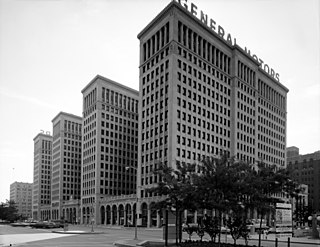
The General Motors streetcar conspiracy refers to the convictions of General Motors (GM) and related companies that were involved in the monopolizing of the sale of buses and supplies to National City Lines (NCL) and subsidiaries, as well as to the allegations that the defendants conspired to own or control transit systems, in violation of Section 1 of the Sherman Antitrust Act. This suit created lingering suspicions that the defendants had in fact plotted to dismantle streetcar systems in many cities in the United States as an attempt to monopolize surface transportation.
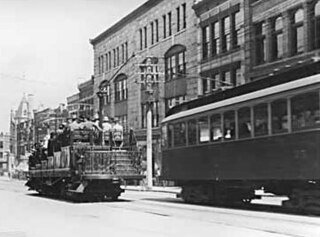
The British Columbia Electric Railway (BCER) was an historic railway which operated in southwestern British Columbia, Canada. Originally the parent company for, and later a division of, BC Electric Company, the BCER assumed control of existing streetcar and interurban lines in southwestern British Columbia in 1897, and operated the electric railway systems in the region until the last interurban service was discontinued in 1958. During and after the streetcar era, BC Electric also ran bus and trolleybus systems in Greater Vancouver and bus service in Greater Victoria; these systems subsequently became part of BC Transit, and the routes in Greater Vancouver eventually came under the control of TransLink. Trolley buses still run in the City of Vancouver with one line extending into Burnaby.
The Central New York Regional Transportation Authority, commonly referred to as Centro, is a New York State public benefit corporation and the operator of mass transit in Onondaga, Oswego, Cayuga, and Oneida counties in New York state. The CNYRTA was formed on August 1, 1970, along with similar agencies in Rochester, Albany, and Buffalo.
The Toronto Suburban Railway was a Canadian electric railway operator with local routes in west Toronto, and a radial (interurban) route to Guelph.

New York State Railways was a subsidiary of the New York Central Railroad that controlled several large city streetcar and electric interurban systems in upstate New York. It included the city transit lines in Rochester, Syracuse, Utica, Oneida and Rome, plus various interurban lines connecting those cities. New York State Railways also held a 50% interest in the Schenectady Railway Company, but it remained a separate independent operation. The New York Central took control of the Rochester Railway Company, the Rochester and Eastern Rapid Railway and the Rochester and Sodus Bay Railway in 1905, and the Mohawk Valley Company was formed by the railroad to manage these new acquisitions. New York State Railways was formed in 1909 when the properties controlled by the Mohawk Valley Company were merged. In 1912 it added the Rochester and Suburban Railway, the Syracuse Rapid Transit Railway, the Oneida Railway, and the Utica and Mohawk Valley Railway. The New York Central Railroad was interested in acquiring these lines in an effort to control the competition and to gain control of the lucrative electric utility companies that were behind many of these streetcar and interurban railways. Ridership across the system dropped through the 1920s as operating costs continued to rise, coupled with competition from better highways and private automobile use. New York Central sold New York State Railways in 1928 to a consortium led by investor E. L. Phillips, who was looking to gain control of the upstate utilities. Phillips sold his stake to Associated Gas & Electric in 1929, and the new owners allowed the railway bonds to default. New York State Railways entered receivership on December 30, 1929. The company emerged from receivership in 1934, and local operations were sold off to new private operators between 1938 and 1948.

The Fifth Avenue Coach Company was a bus operator in Manhattan, The Bronx, Queens, and Westchester County, New York, providing public transit between 1896 and 1954 after which services were taken over by the New York City Omnibus Corporation. It succeeded the Fifth Avenue Transportation Company.
The Gary Public Transportation Corporation (GPTC) is a commuter bus system in Gary, Indiana that offers service to numerous stops throughout the city and neighboring suburbs. GPTC is a public corporation owned but not directly controlled by the city.

The Third Avenue Railway System (TARS), founded 1852, was a streetcar system serving the New York City boroughs of Manhattan and the Bronx along with lower Westchester County. For a brief period of time, TARS also operated the Steinway Lines in Long Island City.
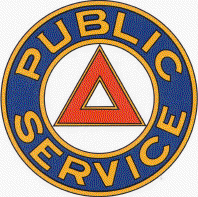
Transport of New Jersey (TNJ), earlier Public Service Transportation and then Public Service Coordinated Transport, was a street railway and bus company in the U.S. state of New Jersey from 1917 to 1980, when NJ Transit took over their operations. It was owned by the Public Service Corporation, now the Public Service Electric and Gas Company.
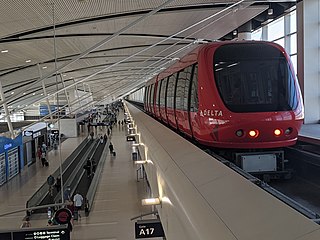
Transportation in metropolitan Detroit is provided by a system of transit services, airports, and an advanced network of freeways which interconnect the city of Detroit and the Detroit region. The Michigan Department of Transportation (MDOT) administers the region's network of major roads and freeways. The region offers mass transit with bus services provided jointly by the Detroit Department of Transportation (DDOT) and the Suburban Mobility Authority for Regional Transportation (SMART) through a cooperative service and fare agreement administered by the Regional Transit Authority (RTA). Cross border service between the downtown areas of Windsor and Detroit is provided by Transit Windsor via the Tunnel Bus. A monorail system, known as the People Mover, operates daily through a 2.94 mile (4.7 km) loop in the downtown area. A proposed SEMCOG Commuter Rail could link New Center, Dearborn, Detroit Metropolitan Airport, and Ann Arbor with access to DDOT and SMART buses. Amtrak's current passenger facility is north of downtown in the New Center area. Amtrak provides service to Detroit, operating its Wolverine service between Chicago, Illinois, and Pontiac. Greyhound Lines operates a station on Howard Street near Michigan Avenue. The city's dock and public terminal receives cruise ships on International Riverfront near the Renaissance Center which complements tourism in metropolitan Detroit.
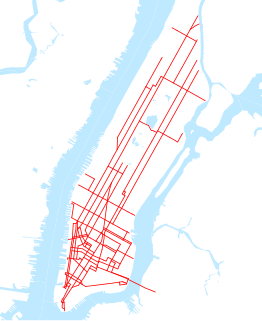
The New York Railways Corporation was a railway company that operated street railways in Manhattan, New York City, United States between 1925 and 1936. During 1935/1936 it converted its remaining lines to bus routes which were operated by the New York City Omnibus Corporation, and now operated by the Manhattan and Bronx Surface Transit Operating Authority. The organization was the successor to the New York Railways Company which was in receivership.
The Syracuse Rapid Transit Railway, an interurban railroad, was chartered on May 21, 1896. The company was a consolidation of the Syracuse Street Railroad Company, the Syracuse Consolidated Street Railway Company and the People's Railroad Company which was formerly leased to the Syracuse Street Railroad Company.
The Bridgeport Traction Company was a streetcar transit company in the area around Bridgeport, Connecticut. The company was incorporated in 1893 through the consolidation of the Bridgeport Horse Railroad Company, Bridgeport Railway Company, and the East End Railway Company. The East End Railway Company was established in 1895 as the Bridgeport and West Stratford Horse Railroad Company. The Bridgeport Horse Railroad Company was incorporated in 1864. The Bridgeport Railway Company was formed in 1893. At the time, streetcars were a more affordable form of transportation for those commuting between Bridgeport and Norwalk. Using streetcars to get to their destination was half the price of using the train. In 1899 president Andrew Radel formed a company that was intended to control the world's oyster trade.
HouTran was a public transportation company that served the Houston area. While its last iteration was publicly owned by the City of Houston, it was privately owned throughout the vast majority of its existence. Throughout several name changes and ownership acquisitions, the company's modes of operation ranged from mule-drawn streetcars to electrified streetcars, and finally to busses. In 1979, it was succeeded by the Metropolitan Transit Authority of Harris County, a state-authorized local transit authority, when it was purchased by that agency as the basis for its then new transit system.
The Rochester Railway Company operated a streetcar transit system throughout the city of Rochester from 1890 until its acquisition by Rochester Transit Corp. in 1938. Formed by a group of Pittsburgh investors, the Rochester Railway Company purchased the Rochester City & Brighton Railroad in 1890, followed by a lease of the Rochester Electric Railway in 1894. The Rochester and Suburban Railway was leased in 1905, extending the system's reach to Irondequoit and Sea Breeze. Rochester Railways was acquired by the Mohawk Valley Company, a subsidiary of the New York Central Railroad set up to take control of electric railways in its territory. In 1909 the holdings of the Mohawk Valley Company were consolidated as the New York State Railways.
Rochester Transit Corporation (RTC) was a privately owned, for-profit transit company that operated streetcar, rail, and bus transit in the city of Rochester and surrounding suburban areas from 1938 until 1968. The city-owned Rochester Subway was operated by RTC on a contract basis from 1938 until 1957. John F. Uffert and William A. Lang served as presidents during the course of operation.
The Utica and Mohawk Valley Railway was the result of the unification of all city and suburban streetcar lines serving Utica, New York, on November 27, 1901. The railway operated city streetcar service as well as a double-track interurban railway between Rome and Little Falls via Utica. The Utica and Mohawk Valley Railway was merged into New York State Railways in 1912. At its peak, the Utica Lines consisted of 17 transit routes operated with more than 100 cars. The line ceased operation in 1933, except for the section between Utica and Whitesboro that survived until 1938. The last city streetcars operated on May 31, 1941. The remaining transit routes were operated with buses and the franchise would be reorganized as the Utica Transit Corporation in 1948.
Connecticut Railway and Lighting Company was a streetcar and bus transit operator serving the region around Bridgeport, Norwalk, Derby, New Britain and Waterbury, Connecticut. It was formed in 1901 by United Gas Improvement Company of Philadelphia to manage the streetcar operations of the Connecticut Light and Power Company, which at the time included Central Railway and Electric Company, Norwalk Street Railway, and the Waterbury Traction Company. The newly formed Connecticut Railway and Lighting acquired Bridgeport Traction Company, Derby Street Railway, Milford Street Railway, Shelton Street Railway, Meriden, Southington and Compounce Tramway Company, and the Cheshire Street Railway. Connecticut Railway and Lighting was leased to the Consolidated Railway and in turn the Connecticut Company between 1906 and 1936. Streetcar operations were discontinued in 1937 when all lines were converted to bus. Transit operations continued until 1972, when all remaining bus operations were suspended and taken over by Connecticut Transit, except in Bridgeport- by the Greater Bridgeport Transit District in 1975.
The Waterbury Traction Company was a streetcar transit operator serving the region around Waterbury, Connecticut. Originally formed in 1884 as the Waterbury Horse Railroad Company, which began service in 1886. The company was reorganized in 1893 as the Waterbury Traction Company, rebuilding and electrifying its routes by the summer of 1894.

The 86th Street Crosstown Line is a bus line in Manhattan, New York City, running mostly along 86th Street on the Upper West and Upper East Sides of Manhattan. Originally a streetcar line, it now comprises the M86 Select Bus Service bus line.








